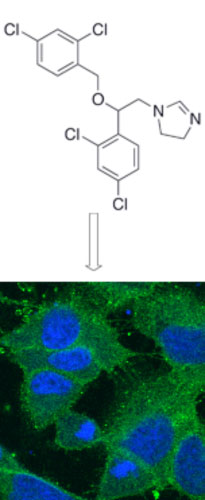|
01/08/2010
Off-target (side effects) drug effects identified
by computational techniques and confirmed by experimental methods
Recent research from the research group of Professor Mark Distefano.
In collaboration with Professor Brian Shoichet at
UCSF, the Distefano lab has investigated the off-target inhibition of protein
farnesyltransferase (PFTase) by commercial drugs. The results of their work
have been submitted to the Journal of Medicinal Chemistry. The inhibition
of protein prenylation has been a target for disease intervention for the
past two decades. Drugs that block PFTase have been evaluated as chemotherapeutics
for some forms of cancer, anti-parasitic agents to treat malaria and chagas
disease, and tools to ameliorate the symptoms of Hutchinson-Gilford progeria
syndrome. The Shoichet lab created the Similarity Ensemble Approach (SEA)
to relate proteins based on the set-wise chemical similarity among their
ligands. SEA has previously revealed cross talk between drugs acting primarily
on G-protein coupled receptors (GPCRs). In this
work, SEA was used to look for potential off-target inhibition of the PFTase
by commercially available drugs. Two commercial drugs, Loratadine and Miconazole,
were identified as potential ligands for PFTase and subsequently confirmed
as such experimentally. Loratadine is known to bind the Histamine H1 receptor
while Miconazole is an inhibitor of the enzyme 14-α-demethylase. These results point towards the applicability
of SEA for the prediction of not only GPCR-GPCR drug cross talk, but also
GPCR-enzyme and enzyme-enzyme drug cross talk.

|